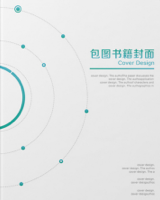Adverse effects associated with acupuncture therapies: An evidence mapping from 535 systematic reviews
Li, Xiuxia;Yang, Kehu
Background and ObjectiveConsidering that physicians and patients widely use acupuncture, it is necessary to explore its adverse effects during treatment. Herein, an evidence map was generated based on published studies to identify acupuncture-induced adverse effects and assess their severity, with the overarching goal of providing references for safe and effective implementation.MethodsA comprehensive literature search was performed in four public databases (PubMed, Embase, Web of science, and the Cochrane Library) to identify relevant studies published up to 15(th) June 2022. In addition, relevant studies were explored in the Epistemonikos database and reference lists were retrieved as a supplement. A MeaSurement Tool to Assess systematic Reviews, Version 2 (AMSTAR-2) quality assessment tool was applied to determine the methodological quality of included systematic reviews (SRs) and/or meta-analysis (MAs), whereas Microsoft Excel 2019 tool was used for data extraction and coding. Heatmaps were generated to display disease type, countries of origin for the first authors, and the sample sizes of original studies. Moreover, bubble charts comprehensively presented intervention categories, adverse reaction types, and evidence levels.ResultsA total of 535 SRs involving 33 adverse reactions were included. Among them, 22 studies were rated as high quality, 28 as moderate, 106 as low, and the rest were of critically-low quality. Numerous adverse effects were described in the studies, including syncope (86 SRs), organ or tissue injury (233 SRs), systemic reactions (113 SRs), infection (19 SRs), and other adverse events (373 SRs). Importantly, these adverse reactions were mainly associated with 19 acupuncture techniques, including electroacupuncture (n = 67), manual acupuncture (n = 47) and acupoint catgut embedding (n = 41). Furthermore, the 535 SRs described 23 diseases, among which symptoms, signs or clinical findings (83 SRs), mental, behavioral or neurodevelopmental disorders (67 SRs), and diseases of the nervous system (66 SRs) had the highest incidence.ConclusionThis evidence mapping explores the adverse effects of acupuncture, showing that there are multiple types of adverse reactions to acupuncture, with milder symptoms. The methodological assessment revealed that most of the included studies were of low- or critically low-quality. Therefore, there is a need for future randomized controlled trials and SRs to comprehensively analyze acupuncture-related adverse events in order to provide reliable and credible evidence.


